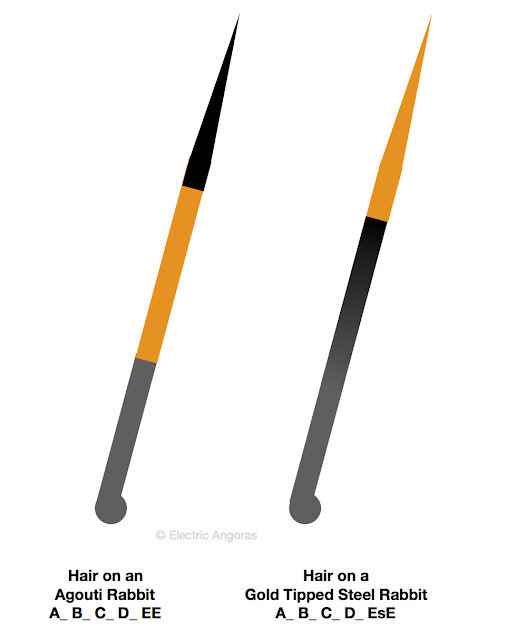Recognized English Angora Colors

Only specific colours and patterns are officially recognized in the ARBA English Angora breed standard. Only these colours, also referred to as varieties, can be shown at an ARBA show. Here is a list of all the recognized English Angora varieties and their corresponding genotypes. English Angoras compete in two classes, either the White Class or the Coloured Class. WHITE CLASS POINTED WHITE (Himalayan) The body is to be pure, clean white. Marking color is to be Black, Blue, Chocolate, or Lilac. Color is to be on the nose, ears, feet, and tail. Toenails must be colored. Eyes: pink iris, red pupil Faults: Markings extremely faded; stained or creamy coat. DQ: Absence of any marking. White spot in any marking. Smut on the usable portion of the pelt. Any Tan Pattern marking appearing in the marking pattern. Genotypes: Black Pointed White aa B_ c(ch)_ D_ E_ Blue Pointed White ...
